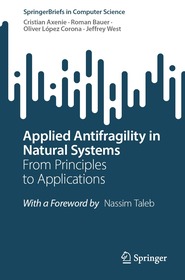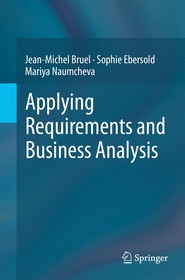
Applied Antifragility in Natural Systems
From Principles to Applications
Series: SpringerBriefs in Computer Science;
- Publisher's listprice EUR 48.14
-
19 966 Ft (19 015 Ft + 5% VAT)
The price is estimated because at the time of ordering we do not know what conversion rates will apply to HUF / product currency when the book arrives. In case HUF is weaker, the price increases slightly, in case HUF is stronger, the price goes lower slightly.
- Discount 12% (cc. 2 396 Ft off)
- Discounted price 17 570 Ft (16 733 Ft + 5% VAT)
Subcribe now and take benefit of a favourable price.
Subscribe
19 966 Ft

Availability
printed on demand
Why don't you give exact delivery time?
Delivery time is estimated on our previous experiences. We give estimations only, because we order from outside Hungary, and the delivery time mainly depends on how quickly the publisher supplies the book. Faster or slower deliveries both happen, but we do our best to supply as quickly as possible.
Product details:
- Publisher Springer Nature Switzerland
- Date of Publication 2 July 2025
- Number of Volumes 1 pieces, Book
- ISBN 9783031903908
- Binding Paperback
- No. of pages80 pages
- Size 235x155 mm
- Language English
- Illustrations XVI, 80 p. 22 illus., 21 illus. in color. Illustrations, black & white 675
Categories
Long description:
As coined in the book of Nassim Taleb, antifragility is a property of a system to gain from uncertainty, randomness, and volatility, opposite to what fragility would incur. An antifragile system’s response to external perturbations is beyond robust, such that small stressors can strengthen the future response of the system by adding a strong anticipation component. Such principles are already well suited for describing behaviors in natural systems but also in approaching therapy designs and eco-system modelling and eco-system analysis.
The purpose of this book is to build a foundational knowledge base by applying antifragile system design, analysis, and development in natural systems, including biomedicine, neuroscience, and ecology as main fields. We are interested in formalizing principles and an apparatus that turns the basic concept of antifragility into a tool for designing and building closed-loop systems that behave beyond robust in the face of uncertainty when characterizing and intervening in biomedical and ecological (eco)systems.
The book introduces the framework of applied antifragility and possible paths to build systems that gain from uncertainty. We draw from the body of literature on natural systems (e.g. cancer therapy, antibiotics, neuroscience, and agricultural pest management) in an attempt to unify the scales of antifragility in one framework. The work of the Applied Antifragility Group in oncology, neuroscience, and ecology led by the authors provides a good overview on the current research status.
MoreTable of Contents:
"
Introduction.- Ecological Antifragility.- Evolutionary Antifragility.- Interventional Antifragility.- Conclusions.
" More







